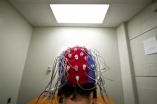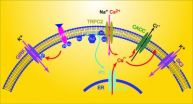(Press-News.org) For millions of people around the world being sick doesn't mean making a trip to the local pharmacy for medicines like Advil and Nyquil. Instead it means turning to the forest to provide a pharmacopeia of medicines to treat everything from tooth aches to chest pains.
But while questions persist about whether such natural remedies are as effective as their pharmacological cousins, one Harvard researcher is examining the phenomenon from a unique perspective, and trying to understand the economic benefits people receive by relying on such traditional cures.
As reported in a paper published this week in PLoS ONE, Christopher Golden, '05, a Post-Doctoral Fellow at the Harvard University Center for the Environment has found that, in the area of northwest Madagascar he studies, people annually receive between $5 and $8 in benefits by using natural medicines.
Though seemingly slight, those benefits add up to between $30 and $45 per household, Golden said, or anywhere from 43 to 63 percent of the median annual income for families in the region.
"We documented people using more than 240 different plant species to treat as many as 82 different illnesses," Golden said. "This data suggests that it can have quite an impact, financially."
It's an impact that may not be limited to Madagascar, or other regions where access to pharmaceuticals is limited.
As part of his analysis, Golden also compared the use of natural remedies with the prices that American consumers might pay if they were purchasing the pharmaceutical equivalent online – where prices are typically lower than on pharmacy shelves. To his surprise, the results showed that the average American could save anywhere from 22 to 63 percent of their annual health care bill, simply by using natural medicines.
"If Americans were relying on traditional medicines as much as people in Madagascar, it could save them a major percentage of their health care expenditures," Golden said.
Golden, however, was quick to emphasize that his study only examined the economics of the natural remedies versus pharmaceuticals, not whether they were equally effective.
"What we're trying to do is account for the economic value the local floral bio-diversity provides to people in this area of Madagascar," Golden said. "We're not assuming there is a medical equivalency – this study is about the perceived efficacy. The people who live in this region often have taken both pharmaceuticals and traditional medicines many times, but there is a perceived efficacy for these traditional medicines."
Measuring that perceived efficacy involved surveying 1,200 households in and around Maroantsetra, a city in the northeast corner of the island nation, to determine which natural medicines they used.
To establish the economic benefit of each natural remedy, Golden asked whether people would prefer to use the natural or pharmaceutical remedy for a given illness. If, for example, 60 percent of those asked said they preferred the traditional medicine, Golden established its value as being 60 percent of the price of its pharmaceutical cousin.
"Certainly, because there's no proof of medical equivalency between these treatments, it could easily be an over-estimation to establish these values," Golden said. "But the bio-diversity in these regions represents a huge pharmacopeia, and there are many hidden benefits to the use of these sorts of traditional medicines. These medicines aren't being improperly prescribed or mismanaged, and because they've been used for millennia, we know they're not producing any type of negative side effects."
The economic benefits offered by natural medicines, however, may not end at those who rely on them to treat day-to-day ailments.
The corner of Madagascar that Golden studied contains nearly one percent of all the global floral biodiversity, meaning the chance that a novel pharmaceutical might be developed based on the traditional medicines used in the area is relatively high. The value of that drug, Golden said, could range from $300 million to as much as $5.7 billion.
"That raises additional issues, about who benefits from the discovery of these drugs," Golden said. "In the case of the Madagascar Periwinkle, which was used to develop the treatment for childhood leukemia, a foreign drug company came, took the plants to a foreign lab and they are now making billions, but not five cents has made its way back to Madagascar."
While the question of their medical efficacy is still to be answered, Golden knows first-hand why people continue to rely on traditional medicines – in at least some cases, they work.
"I have been living here long enough that I've used some of these remedies myself," Golden said. "In one case, some scratches on my leg got infected, and it blew up like a watermelon from my knee to my ankle. My host family went into the forest and came back with what looked like nettles and put them on my leg. It was incredibly itchy, but the swelling went away completely and the pain disappeared. So these treatments really can work."
### END
Health care savings, naturally
Harvard researcher finds the use of traditional, natural medicines offer economic benefits
2012-07-30
ELSE PRESS RELEASES FROM THIS DATE:
Higher retail wages correlate with lower levels of employee theft
2012-07-30
CHAMPAIGN, Ill. — A study co-written by a University of Illinois business professor shows that higher wages are associated with lower levels of employee theft, shedding light on the impact that compensation practices have on shaping employee honesty and ethical norms in organizations.
Using data sets from the convenience-store industry, Clara Xiaoling Chen, a professor of accountancy, and co-author Tatiana Sandino, of the University of Southern California, found that after controlling for each store's employee characteristics, monitoring environment and socio-economic ...
Emotion detectives uncover new ways to fight-off youth anxiety and depression
2012-07-30
CORAL GABLES, FL (July 11, 2012)—Emotional problems in childhood are common. Approximately 8 to 22 percent of children suffer from anxiety, often combined with other conditions such as depression. However, most existing therapies are not designed to treat co-existing psychological problems and are therefore not very successful in helping children with complex emotional issues.
To develop a more effective treatment for co-occurring youth anxiety and depression, University of Miami (UM) psychologist Jill Ehrenreich-May and her collaborator Emily L. Bilek analyzed the efficacy ...
MIT News Release: 10-year-old problem in theoretical computer science falls
2012-07-30
CAMBRIDGE, Mass. -- Interactive proofs, which MIT researchers helped pioneer, have emerged as one of the major research topics in theoretical computer science. In the classic interactive proof, a questioner with limited computational power tries to extract reliable information from a computationally powerful but unreliable respondent. Interactive proofs are the basis of cryptographic systems now in wide use, but for computer scientists, they're just as important for the insight they provide into the complexity of computational problems.
Twenty years ago, researchers showed ...
When rules change, brain falters
2012-07-30
EAST LANSING, Mich. — For the human brain, learning a new task when rules change can be a surprisingly difficult process marred by repeated mistakes, according to a new study by Michigan State University psychology researchers.
Imagine traveling to Ireland and suddenly having to drive on the left side of the road. The brain, trained for right-side driving, becomes overburdened trying to suppress the old rules while simultaneously focusing on the new rules, said Hans Schroder, primary researcher on the study.
"There's so much conflict in your brain," said Schroder, "that ...
Gene mutations linked to most cases of rare disorder -- Alternating Hemoplegia of Childhood
2012-07-30
(SALT LAKE CITY)—Alternating hemiplegia of childhood (AHC) is a rare disorder that usually begins in infancy, with intermittent episodes of paralysis and stiffness, first affecting one side of the body, then the other. Symptoms mysteriously appear and disappear, again and again, and affected children often experience dozens of episodes per week. As they get older, children fall progressively behind their peers in both intellectual abilities and motor skills, and more than half develop epilepsy. Unfortunately, medications that work for epilepsy have been unsuccessful in ...
Smell the potassium
2012-07-30
Kansas City, Missouri - The vomeronasal organ (VNO) is one of evolution's most direct enforcers. From its niche within the nose in most land-based vertebrates, it detects pheromones and triggers corresponding basic-instinct behaviors, from compulsive mating to male-on-male death matches. A new study from the Stowers Institute for Medical Research, published online in Nature Neuroscience on July 29, 2012, extends the scientific understanding of how pheromones activate the VNO, and has implications for sensory transduction experiments in other fields.
"We found two new ...
Cutting the graphene cake
2012-07-30
Sandwiching individual graphene sheets between insulating layers in order to produce electrical devices with unique new properties, the method could open up a new dimension of physics research.
Writing in Nature Materials, the scientists show that a new side-view imaging technique can be used to visualize the individual atomic layers of graphene within the devices they have built. They found that the structures were almost perfect even when more than 10 different layers were used to build the stack.
This surprising result indicates that the latest techniques of isolating ...
Cell receptor has proclivity for T helper 9 cells, airway inflammation
2012-07-30
BOSTON, MA—A research team led by Xian Chang Li, MD, PhD, Brigham and Women's Hospital (BWH) Transplantation Research Center, has shed light on how a population of lymphocytes, called CD4+ T cells, mature into various subsets of adult T helper cells. In particular, the team uncovered that a particular cell surface molecule, known as OX40, is a powerful inducer of new T helper cells that make copious amounts of interleukin-9 (IL-9) (and therefore called TH9 cells) in vitro; such TH9 cells are responsible for ongoing inflammation in the airways in the lungs in vivo.
The ...
Massachusetts Eye and Ear researchers discover elusive gene that causes a form of blindness from birth
2012-07-30
BOSTON (July 29, 2012) – Researchers from the Massachusetts Eye and Ear Infirmary, The Children's Hospital of Philadelphia, Loyola University Chicago Health Sciences Division and their collaborators have isolated an elusive human gene that causes a common form of Leber congenital amaurosis (LCA), a relatively rare but devastating form of early-onset blindness. The new LCA gene is called NMNAT1. Finding the specific gene mutated in patients with LCA is the first step towards developing sight-saving gene therapy.
LCA is an inherited retinal degenerative disease characterized ...
New discovery of how carbon is stored in the Southern Ocean
2012-07-30
A team of British and Australian scientists has discovered an important method of how carbon is drawn down from the surface of the Southern Ocean to the deep waters beneath. The Southern Ocean is an important carbon sink in the world – around 40% of the annual global CO2 emissions absorbed by the world's oceans enter through this region.
Reporting this week in the journal Nature Geoscience, scientists from British Antarctic Survey (BAS) and Australia's national research agency, the Commonwealth Scientific and Industrial Research Organisation (CSIRO), reveal that rather ...
LAST 30 PRESS RELEASES:
A new way to map how cells choose their fate
Numbers in our sights affect how we perceive space
SIMJ announces global collaborative book project in commemoration of its 75th anniversary
Air pollution exposure and birth weight
Obstructive sleep apnea risk and mental health conditions among older adults
How talking slows eye movements behind the wheel
The Ceramic Society of Japan’s Oxoate Ceramics Research Association launches new international book project
Heart-brain connection: international study reveals the role of the vagus nerve in keeping the heart young
Researchers identify Rb1 as a predictive biomarker for a new therapeutic strategy in some breast cancers
Survey reveals ethical gaps slowing AI adoption in pediatric surgery
Stimulant ADHD medications work differently than thought
AI overestimates how smart people are, according to HSE economists
HSE researchers create genome-wide map of quadruplexes
Scientists boost cell "powerhouses" to burn more calories
Automatic label checking: The missing step in making reliable medical AI
Low daily alcohol intake linked to 50% heightened mouth cancer risk in India
American Meteorological Society announces Rick Spinrad as 2026 President-Elect
Biomass-based carbon capture spotlighted in newly released global climate webinar recording
Illuminating invisible nano pollutants: advanced bioimaging tracks the full journey of emerging nanoscale contaminants in living systems
How does age affect recovery from spinal cord injury?
Novel AI tool offers prognosis for patients with head and neck cancer
Fathers’ microplastic exposure tied to their children’s metabolic problems
Research validates laboratory model for studying high-grade serous ovarian cancer
SIR 2026 delivers transformative breakthroughs in minimally invasive medicine to improve patient care
Stem Cell Reports most downloaded papers of 2025 highlight the breadth and impact of stem cell research
Oxford-led study estimates NHS spends around 3% of its primary and secondary care budget on the health impacts of heat and cold in England
A researcher’s long quest leads to a smart composite breakthrough
Urban wild bees act as “microbial sensors” of city health.
New study finds where you live affects recovery after a hip fracture
Forecasting the impact of fully automated vehicle adoption on US road traffic injuries
[Press-News.org] Health care savings, naturallyHarvard researcher finds the use of traditional, natural medicines offer economic benefits


